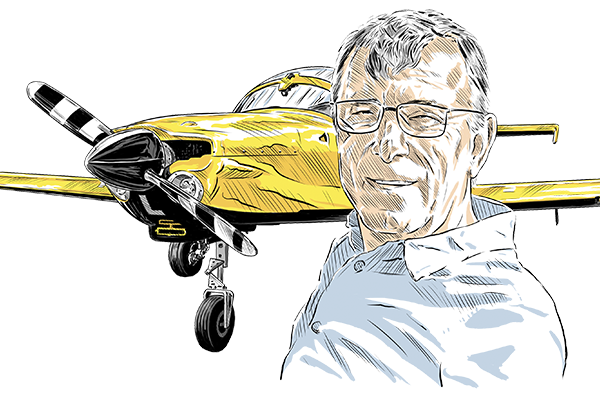Rejected take-off…
On 28 September 2022 at 1000 local time, the pilot of a Piper PA-28-161 was conducting a trial introductory flight from Bankstown, New South Wales, with one passenger on board. The pilot conducted aircraft weight and balance calculations based on the actual weight of the pilot and unverified weight of the passenger, who was occupying the front seat beside the pilot.
During the take-off roll there were no abnormal performance indications. After take-off, the aircraft did not perform as expected and the pilot observed a decreasing airspeed.
The pilot considered the urban terrain ahead and rejected the take-off, landing on the remaining runway. The aircraft subsequently overran the runway and stopped in the ‘overrun area’.
The operator investigation revealed the maximum take-off weight (mtow) may have been exceeded with the centre of gravity (CoG) positioned at, or forward of, the forward limit.
The pilot calculated the CoG at take-off to be on the forward limit and elected to carry ballast in the cargo bay. This ballast was not secured and may have moved during the take-off.
Comment: Although below the mtow, the CofG of PA28 aircraft can be outside of the forward limit with two well-built people sitting in the front seats and nobody in the rear seats. Ballast should be added to the baggage compartment to resolve the balance issue, but clearly it should be reasonably well secured.
Successful ditching
On 13 November 2021, a Socata TB20 Trinidad aircraft departed Jandakot Airport, Western Australia, at about 1510 local time, for a private flight with two people on board. The flight was intended to be 30-minutes along the coast, at an altitude of no more than 1,500ft.
About 15 minutes after take off, the pilot noticed the engine was running ‘rough’. Believing it similar to a previous experience of vapour lock, the pilot began the relevant procedure by turning on the electric fuel pump and switching fuel tanks.
This alleviated the rough running, however, the engine continued to feel ‘different than normal’, so the pilot turned to return to Jandakot. About two minutes later, the rough running cam back and, shortly after, the aircraft’s engine lost power. The aircraft was at 1,000ft, about 1 km offshore.
The pilot assessed that the likelihood of a successful landing inland (past the sand dunes) was remote, due to the aircraft’s altitude and position. The beach was being heavily used by the public, so the pilot decided to ditch in the water, as close to the shore as possible, and away from swimmers.
The pilot radioed Perth ATC to notify it about the engine failure and intent to commence a ditching. The pilot manoeuvred to flare and touch down at 65-70kt, which they judged to be the slowest safe approach speed, with landing gear retracted.
A forced landing was conducted approximately 50m from the shore. The pilot and passenger sustained no injuries during the ditching and evacuation from the aircraft. The aircraft initially sustained cracks to the fuselage and was subsequently destroyed by wave action and salvage activities.
Pilot comments: The pilot attributed the successful outcome to their familiarity with the area and mental preparation, having previously considered the options available in a situation such as this. They also noted that prior research and discussion with other pilots gave them an understanding of how to minimise impact forces and the risk of becoming inverted during ditching.
Comment: This looks like a well-handled ditching by a pilot who had previously thought through the actions to take in order to save both the aircraft occupants and people swimming in the water. Although the aircraft was obviously lost, all lives were saved.
Another vehicle strike
Late in the final approach to Henstridge Airfield, which is unlicensed, the aircraft, a Van’s RV-9A, struck a heavy goods vehicle on a road, which crossed the undershoot. The aircraft then struck the ground inverted, short of the runway. The pilot sustained only minor injuries, but the passenger was seriously injured.
The aircraft was on a standard three-degree approach path when it struck the lorry. The airfield operator subsequently increased the distance by which the threshold is inset from the end of the runway so that aircraft on a standard approach would be higher when crossing the road.
Comment: This is another incident in which an aircraft struck a moving vehicle on a road immediately adjacent to the runway threshold. The aircraft occupants were fortunate to survive. Be very wary of vehicles, particularly on unlicensed airfields as risks factors are higher.
Cable strike
On 21 April 2023, a private Cessna 150G was on a local VFR flight from a private field in Saint-Urbain-Premier, Quebec, with a student pilot and a passenger on board.
While flying at very low altitude over a house in the municipality of Saint-Rémi, Quebec, the aircraft performed a low-altitude manoeuvre, then struck a power line and crashed into the driveway of a house.
A fire broke out, and the aircraft was destroyed. The two occupants were removed from the aircraft with serious injuries and taken to hospital.
Comment: The incident description leaves it unclear as to what sort of ‘low-altitude manoeuvre’ was being carried out. It is also unclear as to why a student pilot was flying with a passenger. However, the incident serves to remind pilots that there is little room for error when close to the ground, and that low flying stunts should never be attempted on a whim. Having struck a power cable the aircraft occupants were very lucky to survive.





